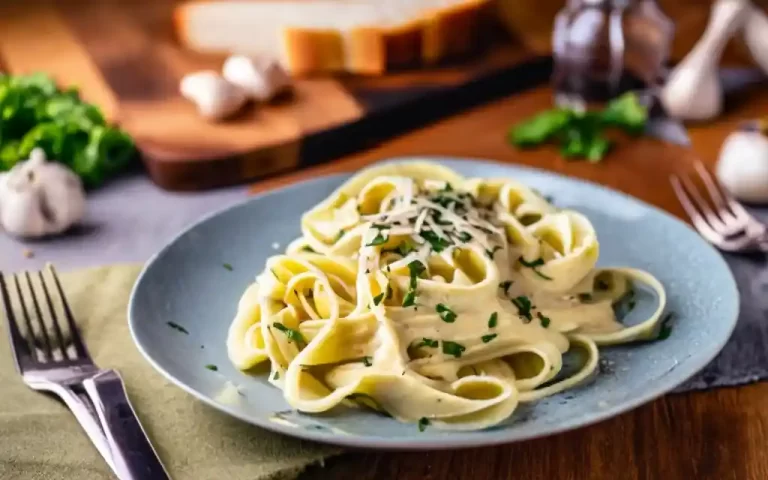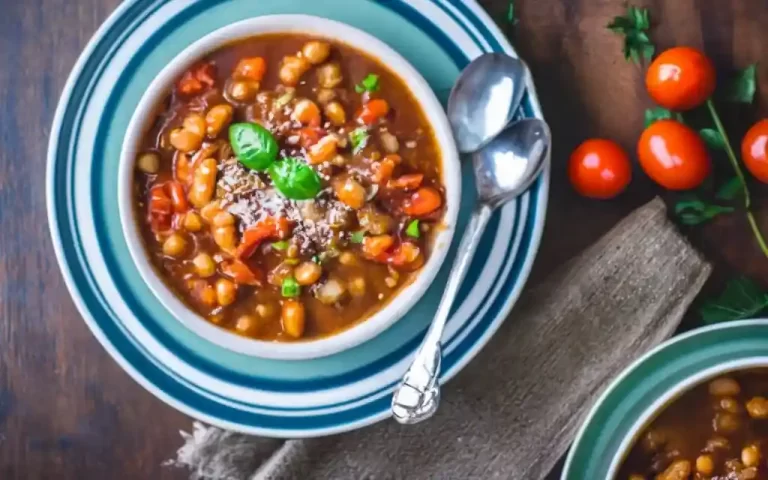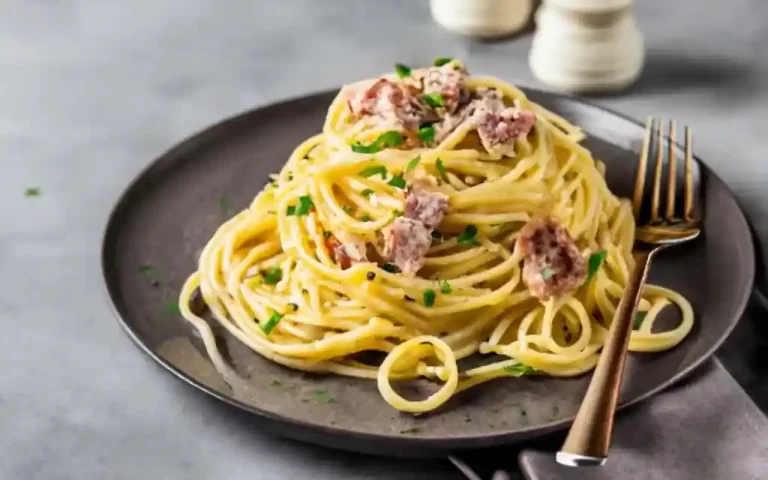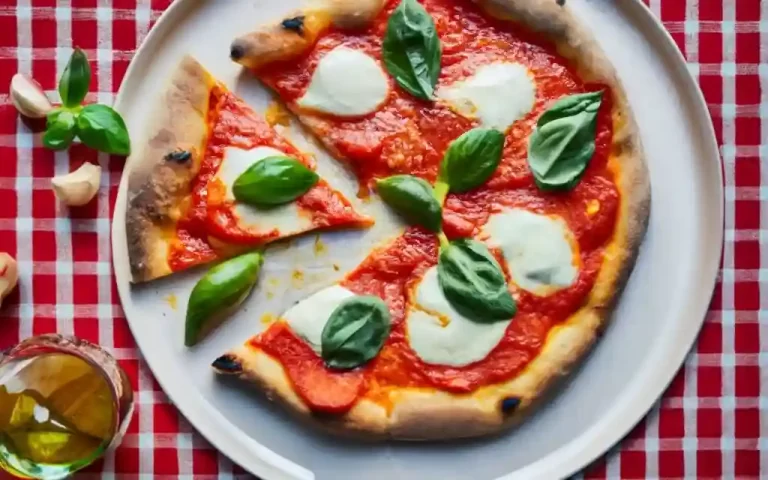How to Make Perfect Panna Cotta
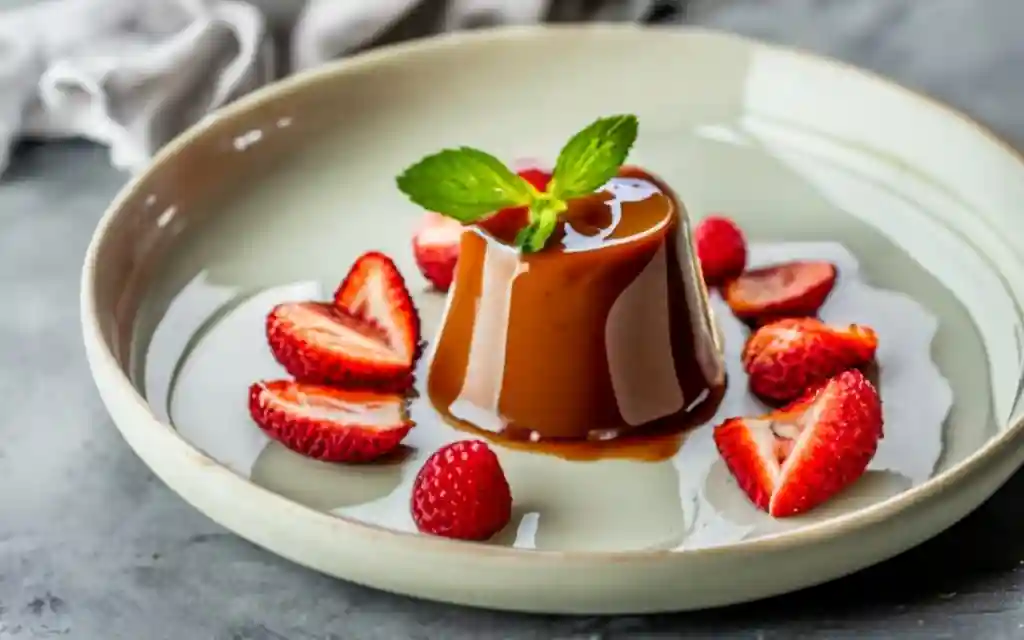
Panna cotta is a traditional Italian dessert that has become increasingly popular worldwide due to its simple yet delicious taste and creamy texture. The term “panna cotta” means “cooked cream” in Italian, and that’s exactly what it is – a dessert made of sweetened cream that is thickened with gelatin. Panna cotta originated in the Piedmont region of Italy, and it has since become a staple dessert in many Italian restaurants and households.
In recent years, Panna cotta has gained popularity around the world due to its versatility and adaptability. It can be flavoured in various ways, from classic vanilla to more unique options like raspberry or mango. Panna cotta can also be served with various toppings, such as fresh fruit, chocolate sauce, or caramel. It is easy to make and can be prepared in advance, making it a perfect dessert for entertaining.
In this article, we will provide you with a simple and easy-to-follow recipe for Panna cotta, along with some tips and tricks to make the perfect dessert every time. Whether you are a beginner or an experienced cook, this recipe will guide you through the process of making delicious Panna cotta from scratch.
Ingredients
Panna Cotta is made with simple ingredients that come together to create a delicious and silky-smooth dessert. Here are the ingredients needed to make Panna Cotta:
- Heavy cream: Heavy cream is the main ingredient in Panna Cotta, and it provides the dessert with its rich and creamy texture.
- Sugar: Sugar is added to sweeten the dessert, and it also helps to thicken the cream.
- Gelatin: Gelatin is what gives Panna Cotta its signature firm texture. It is a flavourless ingredient that is derived from animal collagen.
- Milk: Milk is added to the cream to lighten the dessert and make it less heavy.
- Vanilla extract: Vanilla extract is added to flavour the dessert and provide a subtly sweet aroma.
- Water: Water is used to dissolve the gelatin powder.
- Fresh fruit or fruit sauce (optional): Fresh fruit or fruit sauce can be added to Panna Cotta for additional flavour and texture.
Each component is essential to the recipe. The heavy cream provides the main body of the dessert, while the sugar adds sweetness and helps to thicken the cream. Gelatin provides the firm texture of the Panna Cotta, while milk helps to lighten the dessert and make it less heavy. The vanilla extract adds a subtle flavour and aroma, and water is used to dissolve the gelatin powder. Fresh fruit or fruit sauce is optional but can add a delicious fruity flavour and texture to the dessert.
Preparation
Making the perfect Panna Cotta requires careful attention to detail and following the recipe instructions precisely. Here are the steps for making Panna Cotta from scratch:
- Bloom the Gelatin: In a small bowl, combine gelatin and cold water. Let it sit for 5-10 minutes until the gelatin has absorbed the water and becomes spongy.
- Heat the Cream: In a saucepan, combine heavy cream, sugar, and vanilla extract. Stir constantly over medium heat until the sugar has dissolved and the mixture is hot but not boiling.
- Combine the Gelatin and Cream Mixtures: Remove the saucepan from heat and stir in the bloomed gelatin until it is completely dissolved. Then, whisk in the milk until the mixture is smooth and well combined.
- Pour into Molds: Pour the mixture into desired serving dishes, such as ramekins or cups. If using moulds, lightly grease them with cooking spray or oil.
- Chill: Cover the dishes or moulds with plastic wrap and refrigerate for at least 4 hours or overnight until set.
Tips for getting the perfect texture and flavour
- Use high-quality ingredients for the best results.
- Don’t overheat the cream mixture as it can curdle or boil over.
- Make sure the gelatin is completely dissolved before adding it to the cream mixture.
- Chill the Panna Cotta for at least 4 hours or overnight to ensure it is set and has a smooth texture.
- To add flavour, infuse the cream mixture with herbs, spices, or citrus zest before adding the gelatin mixture.
Flavours and Variations
Panna Cotta is a versatile dessert that can be adapted to suit a wide range of flavours and dietary needs. Here are some suggestions for different flavours and variations of Panna Cotta:
- Raspberry: To make raspberry Panna Cotta, simply puree fresh or frozen raspberries and mix them with the cream mixture before pouring it into the moulds.
- Mango: For a tropical twist, puree fresh or frozen mangoes and mix them with the cream mixture before pouring it into the moulds.
- Lemon: Add the zest of one lemon to the cream mixture for a refreshing and zesty flavour.
- Chocolate: For a rich and indulgent dessert, add melted chocolate to the cream mixture before pouring it into the moulds.
- Coffee: Add a shot of espresso to the cream mixture for a sophisticated coffee-flavoured Panna Cotta.
- Coconut: Use coconut milk instead of cream for a dairy-free version of Panna Cotta.
- Matcha: Mix matcha powder with the cream mixture for a unique and earthy flavour.
- Almond: Add a splash of almond extract to the cream mixture for a nutty and fragrant flavour.
- Vanilla: For a classic flavour, add vanilla extract or vanilla bean to the cream mixture.
- Honey: Use honey instead of sugar for natural and floral sweetness.
Tips for modifying the dish to meet varied dietary requirements
- Dairy-free: Use coconut milk or almond milk instead of cream.
- Vegan: Use agar-agar powder instead of gelatin and plant-based milk instead of cream.
- Low-sugar: Use a sugar substitute such as stevia or erythritol.
- Gluten-free: Panna Cotta is naturally gluten-free, but make sure to check that all ingredients are certified gluten-free.
- Keto: Use a sugar substitute and heavy cream instead of milk for a low-carb version of Panna Cotta.
Serving and Presentation
When it comes to serving and presenting Panna Cotta, there are a few key things to keep in mind. Here are some tips to make sure your dessert looks and tastes its best:
- Unmolding the Panna Cotta: If you’ve made your Panna Cotta in a mould, you’ll need to unmold it before serving. To do this, dip the mould briefly in hot water to loosen the edges, then invert it onto a plate. If the Panna Cotta doesn’t come out easily, run a knife around the edge of the mould to help loosen it.
- Decorating the Panna Cotta: Panna Cotta is a simple dessert, but you can dress it up with some simple garnishes. Fresh berries, fruit compote, caramel sauce, chocolate shavings, or a dusting of powdered sugar are all great options. Just keep in mind that the garnishes should complement the flavour of the Panna Cotta, not overpower it.
- Choosing serving vessels: Panna Cotta can be served in a variety of vessels, from ramekins to wine glasses to martini glasses. Just be sure that whatever vessel you choose is clear, so that the creamy texture and any garnishes are visible.
- Temperature: Panna Cotta is best served chilled, so be sure to refrigerate it until you’re ready to serve. If you’re serving it at a dinner party or special occasion, you may want to consider serving it with an ice pack or on a bed of ice to keep it chilled.
- Presentation: When it comes to presentation, less is often more. Keep the focus on the creamy texture and delicate flavour of the Panna Cotta, and avoid overcomplicating the dish with too many garnishes or competing flavours. A simple, elegant presentation is always a safe bet.
Differences Between Panna Cotta and Custard
Panna cotta and custard are two classic desserts that are often compared and confused with each other. While both desserts are made with cream and sugar, some key differences set them apart.
Texture: The main difference between Panna Cotta and custard is their texture. Panna cotta is a silky-smooth and creamy dessert that is set with gelatin. It has a firm, yet delicate texture that is similar to a silky flan. Custard, on the other hand, is a baked dessert that is thickened with eggs. It has a smooth and creamy texture that is more pudding-like.
Ingredients: Panna cotta is typically made with cream, sugar, and gelatin, which are heated together until the gelatin dissolves and then chilled until set. Custard, on the other hand, is made with milk, sugar, and eggs, which are whisked together and baked in a water bath until set.
Flavour: Both desserts have a rich, creamy flavour, but the flavour profile of Panna Cotta is more delicate and subtle, while custard has a more pronounced eggy flavour. Panna Cotta is often flavoured with vanilla, while custard is often flavoured with nutmeg.
Popularity: Panna cotta originated in the northern regions of Italy and has become increasingly popular in recent years, especially in upscale restaurants and fine dining establishments. Custard, on the other hand, is a classic dessert that has been enjoyed for centuries and is a staple in many households.
Overall, while both Panna Cotta and Custard are creamy and delicious desserts, they are different in terms of their texture, ingredients, flavour, and popularity.
Nutritional Information and Dietary Considerations
Panna Cotta is a creamy and indulgent dessert that is high in calories, fat, and sugar. However, the exact nutritional content of Panna Cotta can vary depending on the recipe and serving size.
One serving of traditional Panna Cotta (made with heavy cream and sugar) can contain around 250-300 calories, 20-25 grams of fat, and 15-20 grams of sugar. If you are trying to reduce your calorie intake or are watching your sugar intake, you may want to consider making some adjustments to the recipe.
There are several ways to make Panna Cotta healthier or more suitable for different dietary needs. Here are some tips:
- Use low-fat or plant-based milk instead of heavy cream. This will significantly reduce the calorie and fat content of the dessert.
- Use a sugar substitute or reduce the amount of sugar in the recipe. Some popular sugar substitutes include stevia, honey, and maple syrup.
- Use coconut or almond milk to make a dairy-free variation. This is a great option for those who are lactose intolerant or following a vegan diet.
- Add fruit purees or extracts to the recipe for extra flavour without adding extra calories or sugar.
- Serve the Panna Cotta in smaller portions or use smaller moulds. This will help you control your calorie intake and enjoy the dessert in moderation.
If you have special dietary concerns or limits, it’s always a good idea to talk with a healthcare expert or certified dietitian. They can help you create a meal plan that fits your unique needs and preferences.
Storage and Reheating
Panna Cotta is a delicate dessert that requires proper storage to maintain its texture and flavour. Here are some tips for storing and reheating Panna Cotta:
Storage
- Panna Cotta should be stored in an airtight container in the refrigerator.
- It can be kept in the fridge for up to 3-4 days.
- If you have any leftover Panna Cotta, be sure to cover it with plastic wrap or a lid before storing it to prevent it from absorbing any unwanted odours or flavours from the fridge.
- Do not freeze Panna Cotta as it will lose its texture and become watery.
Reheating
- Panna Cotta should be served chilled and does not need to be reheated.
- However, if you prefer to serve it warm, you can gently reheat it on the stove or in the microwave.
- To reheat on the stove, place the Panna Cotta in a saucepan and heat over low heat, stirring constantly until it is warmed through. Be careful not to overheat it, as this can cause the Panna Cotta to break or curdle.
- To reheat in the microwave, place the Panna Cotta in a microwave-safe dish and heat in 10-second increments, stirring in between, until it is warmed through.
Remember, Panna Cotta is a delicate dessert and should be handled with care. Proper storage and reheating will help maintain its texture and flavour, ensuring a delicious treat every time.
Conclusion
Panna Cotta, a classic Italian dessert, has gained worldwide popularity due to its creamy texture and delicious flavour. With a simple list of ingredients and easy-to-follow steps, it is an ideal dessert for any occasion.
In this article, we have explored the history and definition of Panna Cotta, its ingredients, and the role they play in the recipe. We have also covered the preparation process, along with tips for achieving the perfect texture and flavour.
Furthermore, we have provided suggestions for different flavours and variations of Panna Cotta, as well as tips for adapting the recipe to suit different dietary needs. We have also discussed the differences between Panna Cotta and custard and have provided an overview of the nutritional content of Panna Cotta.
Lastly, we have offered advice on serving and presentation, as well as storage and reheating. We hope that this article has given you the confidence to try making Panna Cotta at home and experimenting with different variations to suit your taste.
In conclusion, Panna Cotta is a delicious and versatile dessert that is sure to impress your guests or satisfy your sweet tooth. With its creamy texture and endless flavour possibilities, it is a dessert that you can make your own and enjoy time and time again.
Panna Cotta FAQs
How long does it take to make Panna Cotta?
The preparation time for making Panna Cotta is typically around 30 minutes, but it needs to chill for at least 4 hours in the refrigerator before serving.
Can I make Panna Cotta without gelatin?
Gelatin is a key ingredient in Panna Cotta that gives it its signature texture. However, you can use agar agar, a vegetarian substitute for gelatin, instead.
How long does Panna Cotta last?
If stored properly in an airtight container in the refrigerator, Panna Cotta can last up to 4-5 days.
Can I freeze Panna Cotta?
Yes, you can freeze Panna Cotta for up to 1 month. However, it is important to let it thaw in the refrigerator overnight before serving.
Can I make Panna Cotta in advance?
Yes, you can make Panna Cotta up to 2 days in advance. Just make sure to wrap it in plastic wrap before putting it in the fridge.
Can I use coconut milk instead of cream in Panna Cotta?
Yes, you can use coconut milk instead of cream in Panna Cotta to make a dairy-free version.
Can I make Panna Cotta without sugar?
Sugar is a key ingredient in Panna Cotta that helps to set the gelatin and give it a sweet taste. However, you can use sugar substitutes such as honey, maple syrup, or stevia.
Can I use different flavours in Panna Cotta?
Yes, you can use different flavours in Panna Cotta such as raspberry, mango, or lemon. Just replace the vanilla extract with your desired flavour extract or juice.
Can I serve Panna Cotta in different ways?
Yes, you can serve Panna Cotta in different ways such as in ramekins, glasses, or even shaped moulds. You can also garnish it with fresh fruits, whipped cream, or chocolate shavings to elevate the presentation.

